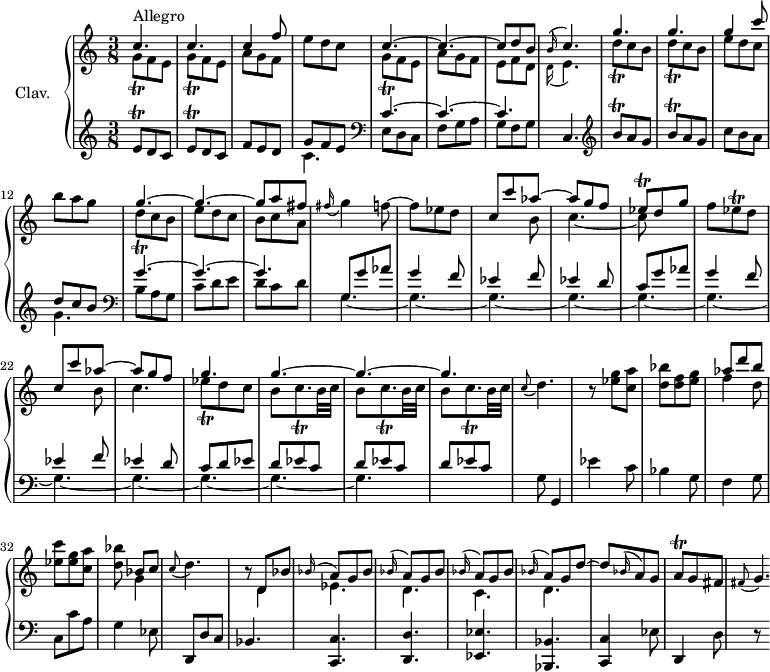Sonate K. 133
|
Sonate K. 133 ut majeur — —
⋅ XV 35 ← Venise XV 36 → XV 37
⋅ V 5 ← Parme V 6 → V 7
⋅ IV 54 ← Münster IV 55 → IV 56
⋅ 53 ← Cary 54 → 56
|
La sonate K. 133 (F.92/L.282) en ut majeur est une œuvre pour clavier du compositeur italien Domenico Scarlatti.
Présentation
La sonate K. 133 en ut majeur, notée Allegro, forme un couple plein de fraîcheur et de vivacité[1], avec la sonate précédente, dans toutes les sources, sauf Vienne.

Manuscrits
Le manuscrit principal est le numéro 36 du volume XV (Ms. 9771) de Venise (1749), copié pour Maria Barbara ; les autres sont Parme V 6 et Münster IV 55 (Sant Hs 3967[2])[3] et Vienne Q 15116 (no 6/32). Une copie figure à Cambridge, dans le manuscrit Fitzwilliam, 32 F 13 (1772) ; et à la Morgan Library, Cary 703 (no 54)[4].
-
Parme V 6.
-
Venise XV 36.
Interprètes
La sonate K. 133 est défendue au piano notamment par John McCabe (1981, Divin Art), Carlo Grante (2013, Music & Arts, vol. 4), Duanduan Hao (2015, Naxos, vol. 16) et Alberto Urroz (2017, IBS) ; au clavecin par Scott Ross (1985, Erato)[5], Andreas Staier (1991, DHM), Colin Booth (1994, Olympia), Emilia Fadini (Stradivarius), Luc Beauséjour (2003, Analekta), Richard Lester (2005, Nimbus, vol. 6), Pieter-Jan Belder (Brilliant Classics, vol. 3) et Pierre Hantaï (2015, Mirare, vol. 4). Johannes Maria Bogner (2015, Fra Berbardo-Collophon) l'interprète sur un clavicorde de Thomas Vincent Glück d'après Cristofori et Aline Zylberajch (2003, Ambronay) sur un piano-forte de Denzil Wraight d'après Cristofori également.
Notes et références
- Chambure 1985, p. 187.
- (RISM 451001917)
- Kirkpatrick 1982, p. 464.
- Victor Tribot Laspière, « Au Château d’Assas, sur les traces de Scott Ross et de Scarlatti », sur France Musique, (consulté le )
Sources
![]() : document utilisé comme source pour la rédaction de cet article.
: document utilisé comme source pour la rédaction de cet article.
- Ralph Kirkpatrick (trad. de l'anglais par Dennis Collins), Domenico Scarlatti, Paris, Lattès, coll. « Musique et Musiciens », (1re éd. 1953 (en)), 493 p. (ISBN 978-2-7096-0118-4, OCLC 954954205, BNF 34689181).

- Alain de Chambure, « Domenico Scarlatti : Intégrale des sonates — Scott Ross », Erato (2564-62092-2), 1985 (OCLC 891183737).


Liens externes
- Ressource relative à la musique :
- [vidéo] Sonate K. 133 (Marina Minkin, clavecin) sur YouTube



